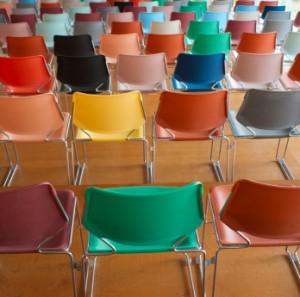guidance on education for sustainable development (& design)
This is an alert for all you folks in the UK involved in sustainable design in Higher Education—we need your input now. The UK’s higher education community is trying to formalize education for sustainable development (ESD), and a major milestone appeared this week in the form of Guidance from the Quality Assurance Agency on Education for Sustainable Development. You can download the guidance here, and I’d recommend a look through by anyone, anywhere, teaching sustainable development (particularly at secondary and tertiary/HE levels).

You can comment from now until Friday January 3, 2014 during the consultation period for this guidance. Use the survey on this page to provide input.
Unfortunately the guidance only complements the UK Quality Code for Higher Education, rather than being an explicit part of it, but this is a step in the right direction.
“We genuinely believe that a well formed guidance document coming from QAA and HEA can make a significant difference in raising the importance of ESD across the HE sector,” comments Simon Kemp, one of the leaders of this effort for the Higher Education Academy.
Before your eyes glaze over, think about how nice it would be if your job required high quality education for sustainable design. How would that affect the way you spent your time, the resources you have available, and the attitude of your managers and peers?
Here are a few highlights from the guidance
What is ESD?
Education for sustainable development means enabling students to develop the knowledge and understanding, skills and attributes needed to work and live in a way that safeguards environmental, social and economic wellbeing, both in the present and for future generations.
Education for sustainable development encourages students to:
- consider the concept of global citizenship and what this might mean in the context of their own discipline
- consider the concept of environmental stewardship and what this might mean in the context of their own discipline
- think about issues of social justice and equity, and how these relate to ecological and economic factors
- develop a future-facing outlook, learning to think about consequences of actions, and how systems and societies can be adapted to ensure sustainable futures
Research over the past few years suggests that students are aware of sustainable development and want their university programs to include the issues. And these graduate are more likely than the average population to take leadership positions.
Graduate Outcomes
The guide points out that students need to learn about sustainable development, but also how to do someting about it. “Education for sustainable development comprises both elements.” So the guide covers what they should know and what skills they should have. And there’s some good stuff on assessment too
Teaching and learning methods
This is a great section where the guidance highlights five teaching methods that are “likely to be particularly effective”:
- case studies
- stimulus activities: provide a prompt or prop (newspaper article, a painting, images, video) as the basis for discussion
- simulation: put your students in simulated real life situations—a Sustainable development goals summit, a carbon trading game, role play
- experiential project work: interactive and participatory projects (developing proposals, doing observational research, conducting reviews, writing proposals, entering competitions)
- place-based learning: work in the local community, use and develop local knowledge
[as a back-up…you can still use traditional pedagogies such as lectures, seminars, essay writing and laboratory work]
What’s great about these methods is how the context of design naturally makes use of them (you can get some ideas from the teaching guide for the Designer’s Atlas of Sustainability).
So download the guidance and have look, then be sure to comment.
—
As always, if you find this post useful, pass it on. Sign up for the monthly roundup (it comes with a bonus article) in the right margin.
Also check out my post on the Philippines over on the design, consumerism and activism blog.
Subscribe
About
Join me on the first Thursday of the month for ideas, tips and inspiration for teaching and researching sutainable design. Sign up to get these posts in your inbox.


